
Paul Anderson playlist of videos that can be used in an AP Environmental Science Class
- Subject:
- Applied Science
- Environmental Science
- Material Type:
- Lecture
- Provider:
- Bozeman Science
- Date Added:
- 11/23/2016

Paul Anderson playlist of videos that can be used in an AP Environmental Science Class

Anatomy and Physiology Lab I slide decks created by Steven Lee M.S. Pathology, FTCC. The PowerPoints include labeled body images to assist students in identifying body parts. Nicole Shaw is only responsible for assisting Steven with licensing his work under an open license and uploading content to the Commons.

Anatomy and Physiology Lab I slide decks created by Steven Lee M.S. Pathology, FTCC. The PowerPoints include labeled body images to assist students in identifying body parts. Nicole Shaw is only responsible for assisting Steven with licensing his work under an open license and uploading content to the Commons.

Estudo de eficácia da aplicação de maquete didática, simulando o comportamento de diferentes tipos de microplásticos em distintos ambientes aquáticos, aplicado à estudantes do 7° ano de escola pública em Belém-PA.

This textbook introduces students to the application methods of control charts to improve quality in health care. The textbook is written to be accessible to any student in the areas of health information management, health care informatics, and health care industrial engineering. Having a basic background in statistics would be beneficial, but such training is not a prerequisite to understanding how to apply the techniques discussed here. Several How-To sections are included to demonstrate the implementation of the given control charts using software such as Minitab and Excel. Additionally, samples of a Python code are included and can directly be accessed in a Jupyter Notebook at https://github.com/JeromeNN/Applications-Control-Charts-Quality-Improvement-Health-Care
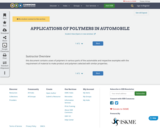
this document contains usses of polymers in various parts of the automobile and respective examples with the requirement of material to make product and polymers selected with similar properties.
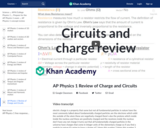
In this video David quickly explains each charge and circuit concept and does a sample question for each one. Created by David SantoPietro.
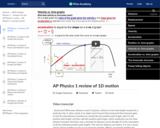
In this video David rapidly explains all the concepts in 1D motion and also quickly solves a sample problem for each concept. Keep an eye on the side scroll see how far along you've made it in the review video. Created by David SantoPietro.
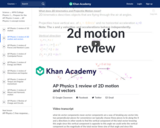
In this video David quickly explains each 2D motion concept and does a quick example problem for each concept. Keep an eye on the scroll to the right to see where you are in the review. Created by David SantoPietro.

In this video David explains each concept for centripetal motion and solves an example problem for each concept. Created by David SantoPietro.
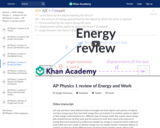
In this video David explains the concepts in Work and Energy and does an example problem for each concept. Link for document: https://www.dropbox.com/s/t1w6xlnkozzel17/Energy%20review.pdf?dl=0. Created by David SantoPietro.

In this video David quickly explains each concept behind Forces and Newton's Laws and does a sample problem for each concept. Keep an eye on the scroll to the right to see how far along you've made it in the review. Created by David SantoPietro.

In this video David quickly reviews the momentum and impulse topics on the AP Physics 1 exam and solves an example problem for each concept. Created by David SantoPietro.
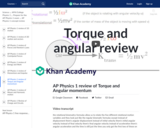
In this video, David quickly explains each torque and angular concept and does a sample question for each one. Created by David SantoPietro.
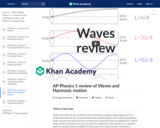
In this video David quickly explains each concept for waves and simple harmonic motion and does an example question for each one. Created by David SantoPietro.

Paul Anderson video playlist for videos that can be used in a AP Physics Essentials class

Trata-se de um produto técnico de forma complementar a produçãointelectual da Área de Ciências Ambientais (CiAmb). O E-book tem oobjetivo de contribuir e orientar professores e gestores da educaçãobásica que pretendam aplicar a ABP associado Educação Ambiental (EA)crítica ou em qualquer outra área, fazendo as devidas adaptações àrealidade vivida. Ou seja, pode facilitar professores e gestores noentendimento da ABP e de práticas de EA crítica.

A cartilha “Aproveitamento de água de chuva: A água que você precisa vem das nuvens” é um material informativo que tem por objetivo disseminar o aproveitamento da água da chuva como uma técnica alternativa de utilização dos recursos hídricos adequada ambientalmente e socialmente, tendo como alicerce a Educação Ambiental- EA.
Esta cartilha se destina ao publico juvenil, mas também a todos aqueles que se interessem pelo tema, a fim de proporcionar maior familiaridade com a temática através do desenvolvimento de conceitos e levantamento de reflexões.
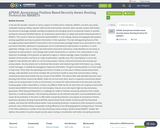
In the last two decades, research in various aspects of mobile ad-hoc networks, MANETs, has been very active, motivated mainly by military, disaster relief and law enforcement scenarios. More recently, location information has become increasingly available; partially prompted by the emerging trend to incorporate location or position sensing into personal handheld devices. An evolutionary natural step is to adopt such position-based operation in MANETs. This results in what we call position-based MANETs. In such settings, devices are equipped with position-sensing capabilities and rely on position information in their operation. The main distinguishing feature of the envisaged position-based MANET environment is the communication paradigm based not on permanent or semi-permanent identities, addresses or pseudonyms, but on instantaneous node locations or positions. In some application settings, such as: military, law enforcement and search-and-rescue, node identities are not nearly as important as node positions. Such settings have certain characteristics in common. First, node position is very important: knowledge of the physical, as opposed to logical or relative topology, makes it possible to avoid wasteful communication and focus on nodes located within a specific area. Thus, the emphasis is not on the longterm node identity, but rather on current node position. Second, critical environments face security and privacy attacks. Security attacks aim to distribute false location and network ing control information, e.g., routing control messages, or impede the propagation of genuine information. The goal of privacy attacks is to track nodes as they move. Third, when the operating environment is hostile, as is the case in military and law enforcement settings, node identities must not be revealed. We use the term hostile to mean that communication is being monitored by adversarial entities that are not part of the MANET. The need to hide node identities becomes more pressing if we further assume that MANET nodes do not trust each other, due to a suspicious environment where nodes can be compromised. In such an environment, it is natural for node movements to be obscured, such that tracking a given node is impossible or, at least, very difficult. While we do not claim that such suspicious and hostile location-based MANET environments are commonplace, they do occur and require high security and privacy guarantees. While doing all these;there is a challenge for nodes to maintain anonymity protection from outside observers or malicious attackers. Full anonymity protection can be achieved only when ;sources,destinations and routes all are protected. In this work, to offer better anonymity protection, we propose an Anonymous Position-based Security Aware Routing Protocol (APSAR). Experimental results exhibit consistency with the theoretical analysis, and show that APSAR achieves better route anonymity protection compared to other anonymous routing protocols. Also, APSAR achieves comparable routing efficiency to the GPSR geographical routing protocol. The work in this thesis addresses a number of security and privacy issues arising in position-based MANETs. models. We address the problem of position based security aware routing in consideration with better anonymity protection .
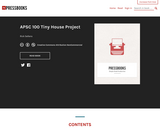
This book was created to support Project 677 in APSC 100 in the Faculty of Engineering at Queen’s University during the winter term of 2019, and is being updated and expanded to support Project 725 in Winter 2021. It provides a publicly visible collection of information that will help with this design project. Use of these resources elsewhere under the CC license is encouraged, but not supported. The contents of this book will grow and change over the term. Please fell free to add your comments or questions in any of the sections and I will try to address them.
The resources in this book are not comprehensive and are only intended to provide a starting point to explore design options. In particular, there will be many examples illustrated by single products that are not the only, or even the best solutions for a particular application. You will need to go well beyond the contents of this book to make your independent design decisions.
The models used for building heat transfer are very much simplified for an introduction to the ideas and should be used cautiously. Design of actual building systems should be undertaken in much greater detail. The target here is to use models that don’t require you to learn any new physics.
The secondary reason this book exists is to give me some practice using PressBooks to develop Open Educational Resources (OER). Some of the files that are linked from this book are on Google Drive, and some are on GitHub.
Word Count: 13755
(Note: This resource's metadata has been created automatically as part of a bulk import process by reformatting and/or combining the information that the author initially provided. As a result, there may be errors in formatting.)